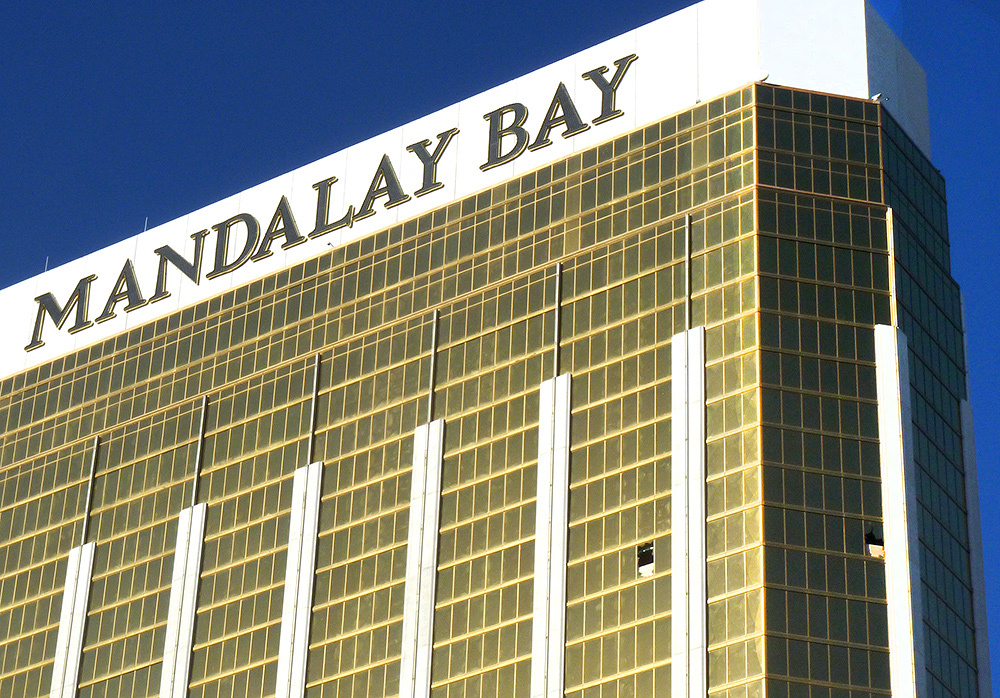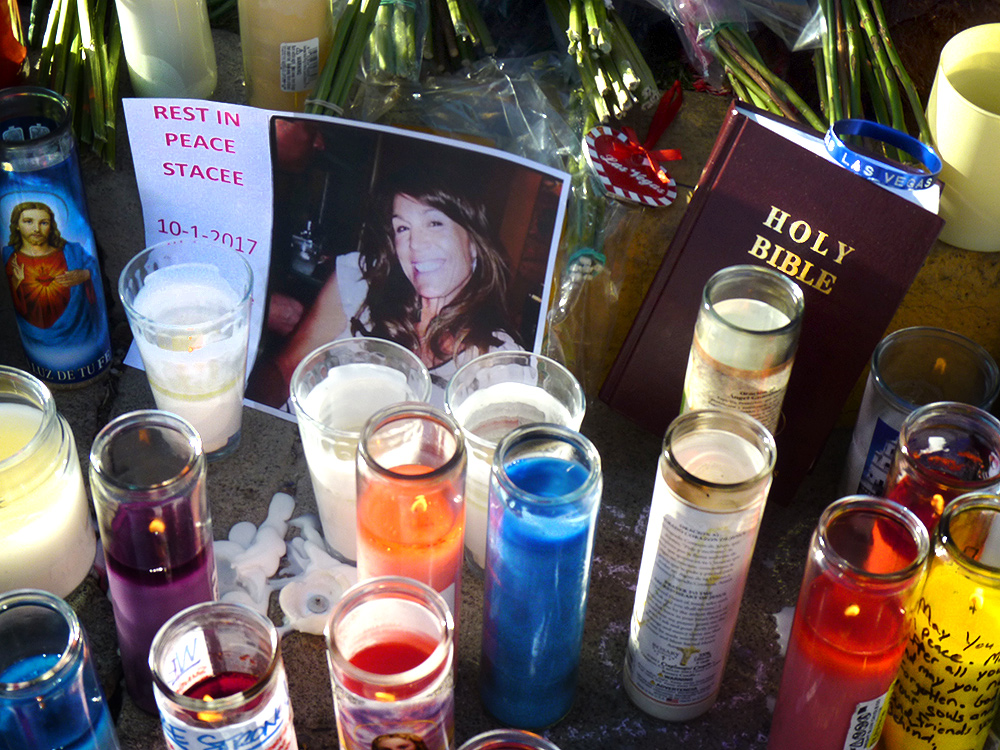
By Dr. Sudip Bose, MD, FACEP, FAAEM
“The worst act imaginable often brings out the best of people.”
You’ve likely heard that phrase, probably often repeated, during the news coverage of the horrific mass shooting at the Route 91 Harvest Festival outdoor concert on the Strip in Las Vegas on Sunday, Oct. 1, as well as during the aftermath of hurricanes Harvey, Irma and Maria.
As a physician and especially as an emergency department doctor, we train for mass casualty situations on a routine basis, always hoping we never have to experience such an incident in reality. It’s a concept I accepted as a medical officer on the front lines of Iraq in the Army: We prepare in peacetime for wartime. When a mass casualty situation happens, that’s exactly what it’s like – you get thrust into a war zone immediately.
And it takes an Army to carry out the mission needed to try to keep casualties as low as possible.
At 10:05 pm Sunday night, shots rang out from the upper floors of the Mandalay Bay Resort and Casino on Las Vegas Boulevard. Initially most people thought what they heard might be fireworks associated with the concert. But all too soon, concert-goers realized that they were being fired upon as hundreds of rounds of bullets rained down on them. It didn’t take long for that “Army” to swing into action on the ground to start treating the wounded. First responders, as well as concert-goers themselves, immediately started do what they could to stop the bleeding of those hit. They had to get the injured stabilized and transported to hospitals. Las Vegas area hospital emergency departments quickly became saturated with patients. Victims – 5, 6, 7, 8 at a time – were piled into ambulances at the scene of the shooting and rushed away for treatment. Eyewitnesses to the shooting event also reported that gunshot victims were loaded into pickup trucks and civilian cars in some cases and transported to hospitals.
The two hospitals that took in the most casualties – the University Medical Center (UMC), the only Level I trauma center in the state of Nevada, and Sunrise Hospital, a Level II trauma center – as well as other area hospitals, began taking in victims. Emergency department nurses and doctors began to triage patients and get the most seriously injured treated stat (an often-used medical term meaning as fast as possible). Surgeons began operating immediately and began funneling through a seemingly never-ending line of patients. The sprint to save lives was in full swing. Longer-term treatments for PTSD (Post Traumatic Stress Disorder) and other mental issues will come next – the marathon part of the recovery process as patients recover from their wounds.
At this writing, there are 58 people dead at the hands of the gunman who fired high-powered weapons from the 32nd floor at Mandalay Bay into the penned-in crowd of concert-goers across the street, with more than 500 injured.
First responders – the policemen and women, the fire fighters and EMTs, are often the unsung heroes in incidences like this. They all wear flags on their uniforms and do things to help people and save lives that often only the victims they directly help fully understand. They help someone, then move on, unknown sometimes even to those they help, let alone the public at large.
Musician Bryan Hopkins of the group Elvis Monroe was in Las Vegas attending the Route 91 Harvest Festival just to watch the concert, not perform, was caught up in the melee trying to lead two younger women to safety. He described a police officer running up to him as he tried to find a way to safety: “There’s a police officer running at me, sweaty face, screaming, ‘This way, this way!’ As soon as we got past him, that guy took off to where all the bad was.”

A woman who survived the mass shooting, who is married to a police officer, posted a photo on Instagram of herself, her husband, and a group of friends at the concert just before the shooting began. She acknowledged the first responders at the scene, she also thanked God for surviving, and in her Instagram post, wrote, in part: “Thank you for all the brave officers who responded to the scene after the terror took place, and for the paramedics who saved lives tonight. Thank you for the bravery and tactical skill of the Las Vegas Police who found the shooter quickly and took him down. Thank you for the nurses and doctors currently still working on the victims. Above all thank you for my brave husband who used his own body to shield me and others from bullets as those next to us were shot. When we were separated and he realized he could no longer protect me he stayed behind to hold pressure on gunshot wounds and carry people to trucks for departure to hospitals. He and all the other off duty officers, military personal, and anyone else in the venue and out who helped save a life tonight are the true heroes.”
According to a FoxNews.com report, the UMC emergency department “turned into ‘controlled chaos’ after being flooded with over 100 patients who arrived in ambulances and witnesses’ cars.”
“We started divvying them up, taking them to the operating room and doing what’s called ‘damage control surgery,’ where you’re not definitively repairing everything,” Jay Coates, a trauma surgeon at UMC, told USA Today. “You are just stopping the dying.”
According to that FoxNews.com report, Coates described the hallways of the UMC Level I trauma center as overflowing with patients, so much so that they spilled outside the medical center. He said he had no idea even who he worked on. “It was very clear that the first patient I took back and operated on that this was a high-powered weapon,” he was quoted as saying. “This wasn’t a normal street weapon. This was something that did a lot of damage when it entered the body cavity.”
The Level I trauma classification that UMC holds means that the hospital participates in two major disaster drills each year, in addition to internal drills. Dr. John Fildes, a trauma surgeon and UMC’s director of trauma and chair of UNLV School of Medicine surgery department, said the center has drilled on a concert venue disaster in the past.
“We’ve actually drilled in the past on a concert venue,” he told the Las Vegas Review-Journal. “We’ve drilled on a plane crash. We trained on this. And it just went off perfectly, on our side. I feel bad for the people that were hurt — I really do. But I’m glad we could help.”
Just to get an idea of the level of dedication to getting the shooting victims treated, hospitals report that staffers ignored the traditional end of shifts and stayed on for countless hours, continuing to give medical aid; staffers who weren’t scheduled to work came in anyway to handle the volume. UMC reported treating 104 patients the night of the shooting with 4 fatalities. Sunrise Hospital reported treating 180 victims with 14 fatalities. The Valley Hospital System, which includes Desert Springs, Spring Valley, Henderson, Valley, Summerlin and Centennial Hills hospitals, released information through a spokeswoman reporting that the hospital network treated a total of 228 patients. Another nearby hospital network, St. Rose Dominican hospitals, which includes three centers, treated 57 patients.
As of this writing, officials have identified all but three victims who died as a result of the shooting. Treatment of the hundreds of victims (the total of shooting victims having received treatment has been reported as 527) by the various hospitals and getting them back to health will take days, weeks and months in some cases.
Steve Sisolak is the Clark County, Nevada, Commission Chair for Las Vegas, and he began an online fund-raising effort to assist the victims of the tragic Las Vegas shooting. At a news conference earlier, he noted that the fund had risen to almost $3.8 million, not counting some major six-figure contributions. He said he was very pleased with that level of donation, but that due to the nature and severity of the wounds inflicted on the victims, he anticipated needing a lot more financial help, which could then be passed along to the victims to help defray personal costs for what could be long-term treatment. The fund now stands at more than $9 million raised. If you are interested in donating, you can do so at: Las Vegas Victims’ Fund – GoFundMe.com.
To learn more about Dr. Sudip Bose, MD, please go to SudipBose.com and visit his nonprofit TheBattleContinues.org where 100 percent of donations go directly to injured veterans.
